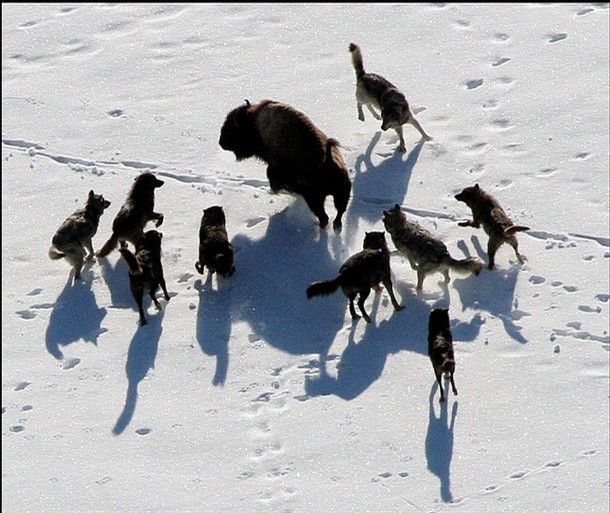How Gray Wolves Hunt

-Wolves
usually hunt in packs. Each pack has its own territory in which it
hunts and lives. The pack defends and guards this territory from other
intruding wolves. The territory size depends on the availability of
prey. If prey is scarce, the territory may cover as much as 800 square
miles (2,100 square kilometers). If prey is plentiful, the area may be
as small as 30 square miles (77 kilometers).
-Some wolves are
not in packs, these wolves are called lone wolves. They hunt by
themselves while wandering around. They usually target smaller, weaker
creatures to hunt. At some point the lone wolf might join another lone
wolf and form its own pack to hunt with.
-At the beginning of
the hunt the members of the pack gather together greeting each other
with howls. These howls will warn off other wolves in the area to stay
out of the packs territory. The pack will then roam through their
territory until they find prey. After finding and choosing a
particular animal, they move in on it from the opposite direction the
wind is blowing. This prevents the prey from smelling the wolves
coming, becoming alert, then running away. The wolves will quietly
close in on the prey, sometimes in single file. Soon they will break
into a run and the chase begins.
-If the wolves are able to catch
their prey, they attack the rump or sides of the animal. Nipping and
biting they try to wound and weaken the animal. Most of the bigger
animals wolves hunt have horns on their heads. These horns are used
for defense against such animals as wolves. When attacking the wolves
will bite at areas away from the head of the prey avoiding the sharp
horns. After the animal has been weakened the wolves will take the
animal down by grabbing it by the throat or snout. Wolf hunts can last
only a few minutes or as long *Has a few hours or more.
-After the
hunt, the wolves will gorge on the kill if it was successful. They
have large stomachs, enabling them to eat 20 pounds (9 kilograms) of
meat or more. If the hunt is not successful the wolves will continue
on searching for new prey, maybe one that is weaker, providing an
easier kill. Wolves can go without food for weeks at a time.
